Interview: Jared James Nichols on fingerstyle blues tips and perfecting his Les Paul signature pickup: "I would say it’s your favourite P-90 you haven’t tried yet"
"It’s a game-changer because anyone who played one of my signatures before was like, ‘Yeah, I like it, but the P-90 is buzzy.’ Now, we’re getting rid of that"

For most guitarists, the idea of being invited to design and build a signature model to their own exacting specifications by a world-class manufacturer is purely the stuff of daydreams. For plenty of those fortunate enough to get to do so, it still often tends to be a once-in-a-lifetime opportunity.
But, at just 34 years old, blues-rock force of nature Jared James Nichols has already completed his third collaborative project with Epiphone. Featuring his all-new, Seymour Duncan-made JJN Silencer P-90 pickup and finished in Aged Pelham Blue, cue the Jared James Nichols Blues Power Les Paul Custom.

Like his original Epiphone Old Glory Les Paul from 2019 and its Gold Glory follow-up iteration of 2021, and again it boasts a simple single pickup configuration to “force you to get all the sounds using the two knobs and your hands.” But there's a key difference this time around, as we'll discuss.
According to Jared, whose tactile, pickless approach is as essential to his sound as the P-90 Les Pauls with which he’s rapidly becoming synonymous, that’s what makes it “a personal instrument.”
“You can’t flip pickups or use a Bigsby,” he stresses. “You get what you’re given and you’ve got to make all of the sounds.”
Zooming in from his home in Nashville – new signature model in hand – Mr Blues Power himself gives us the guided tour of the guitar and pickup, the latter which is also available for standalone purchase. But, when it comes to any artist’s sonic thumbprint, Jared believes that gear is only ever half the story. Digging into the specifics of his own dynamic fingerstyle approach, we also distill the secrets and subtleties of his sound – from tiny volume pot tweaks to conjuring huge Hendrixian walls of feedback…
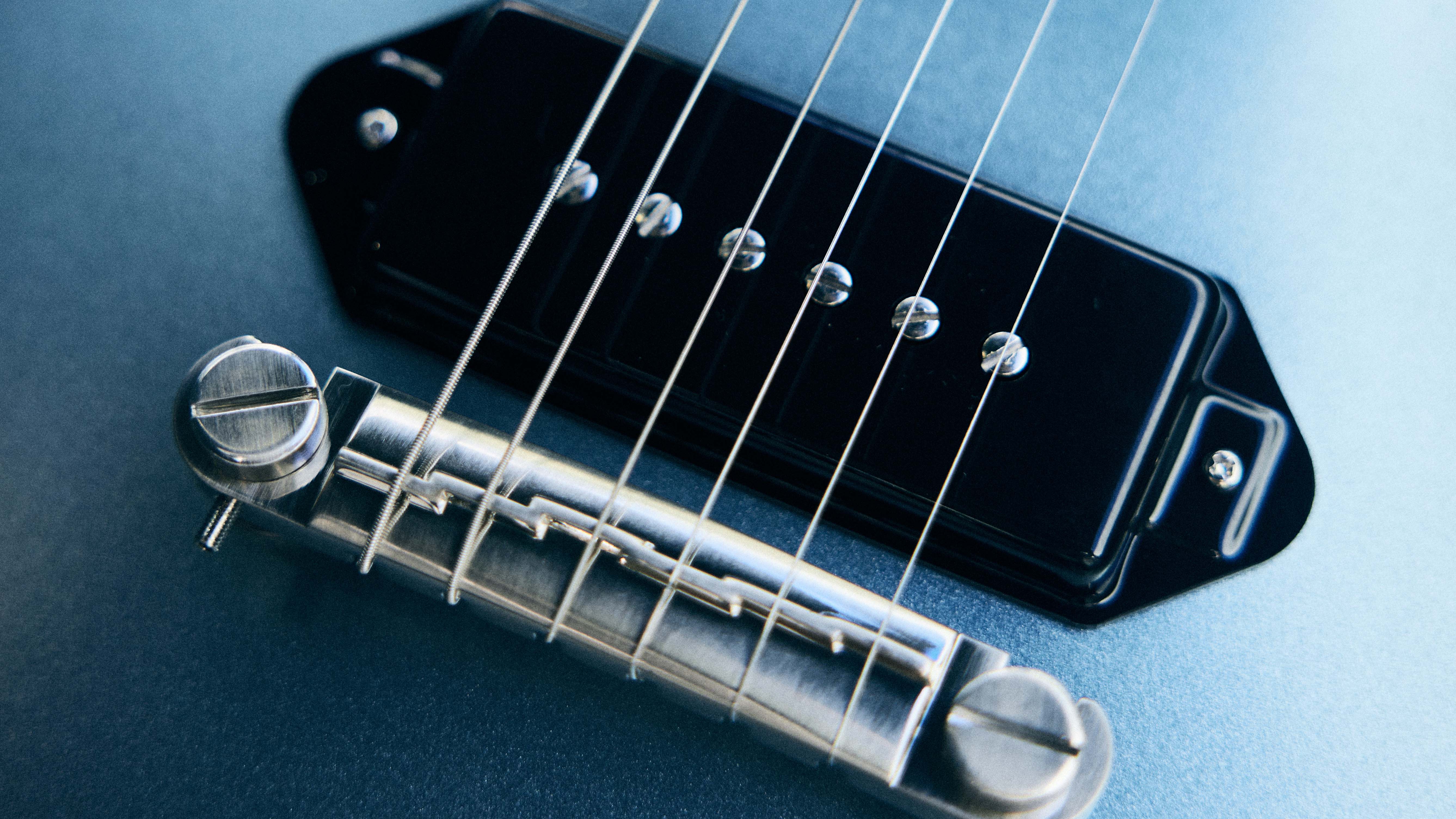
What sets the Blues Power Les Paul Custom apart from your last signature, the Gold Glory?
Want all the hottest music and gear news, reviews, deals, features and more, direct to your inbox? Sign up here.
"The biggest thing about it is the pickup. I did a fancy Seymour Duncan signature pickup. I got to work with Seymour and develop this pickup from the ground up, which is insane. He was like, ‘Well, what do you want out of a P-90 that you’re not already getting?’
"Truth be told, the only thing I could think of – because I love the Seymour Duncan Antiquity pickup – was that I wanted to have a pickup that’s a P-90, but it doesn’t have as much hum. They made some called P-100s, but they didn’t even sound like P-90s. I wanted it to have that sound. So, it probably took a year and a half and he sent me about four different ones. Finally, they knocked it out of the park!
"It’s a game-changer because anyone who played one of my signatures before was like, ‘Yeah, I like it, but the P-90 is buzzy.’ Now, we’re getting rid of that. It’s definitely got all the quality of a P-90 but it’s even got more punch, which is killer.
"The other big difference is locking tuners. I was against it at first. I was like, ‘I don’t really use them and I only want to put my name on something that I actually use.’ But they were like, ‘Just try it, you’ve got to try it!’
"So, they sent me one of the guitars with locking tuners and one without, and the one with locking tuners was instant. I tuned it, stretched the strings and played it for two minutes, tuned it again and then it was set. It’s a big difference.
"A lot of people come up to me and ask, ‘How do you keep your Les Pauls in tune?’ Truth be told, I’m always messing around. But, with these tuners, it just gets rid of that step too. Now it’s getting too easy! You have a silent P-90 and locking tuners.
"Otherwise, there’s obviously the Pelham Blue and the CTS US electronics. It’s ready to go!"
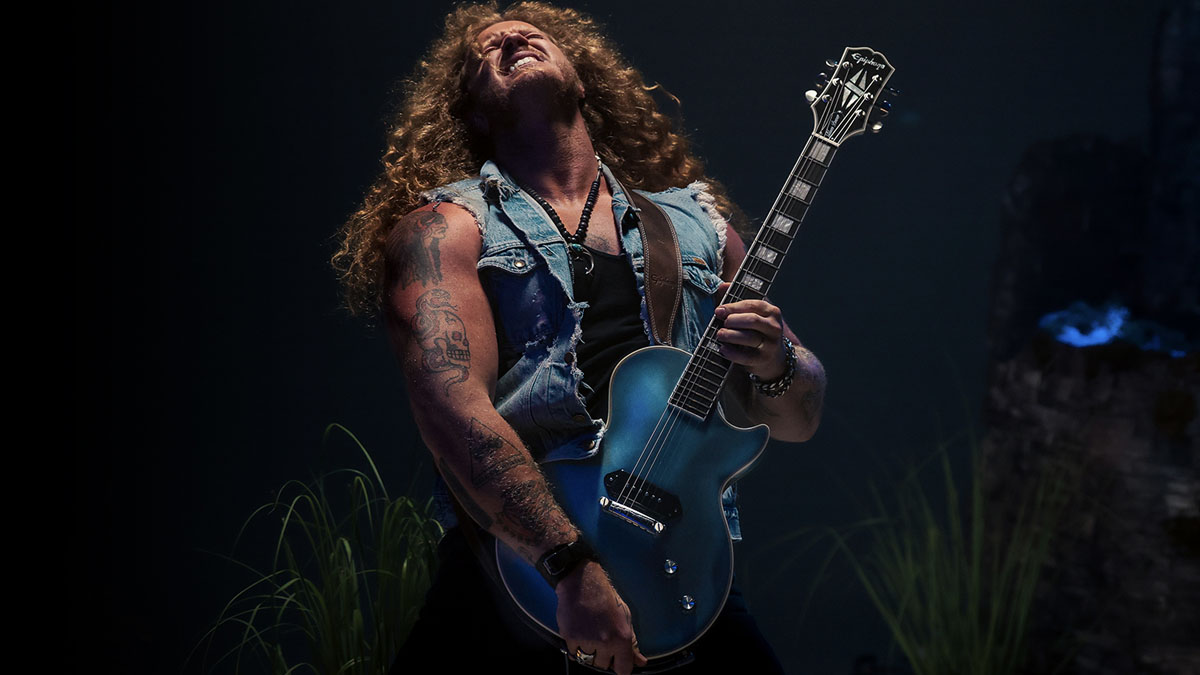
How would you describe this guitar’s innate tone or 'singing voice'?
"If I could describe it, the right word I would use is ‘overtones.’ When you hit a chord, it’s not like you hear one single thing. All of the strings retain definition, so you’re able to hear all of that, even at a distorted volume. I would say its singing voice does go from a whisper - kind of really glassy and clean - to a scream. I would say it’s your favourite P-90 you haven’t tried yet.
Are the good people at Seymour Duncan and Epiphone using that cracking tagline?
"I don’t know, but I think we just nailed that!"
I wanted a guitar that could compete with anything modern
Is it quite a high-output pickup?
"It is a little more high output than normal. That’s simply because, when I play my old Les Pauls, they're so old that the magnets and the pickups are really weak. I wanted a guitar that could compete with anything modern. The vintage guitars do their own thing, but when it comes to P-90s, I don’t like it when people go, ‘Oh yeah, it’s vintage-voiced.’ I’m like, ‘Well, what does that mean?’
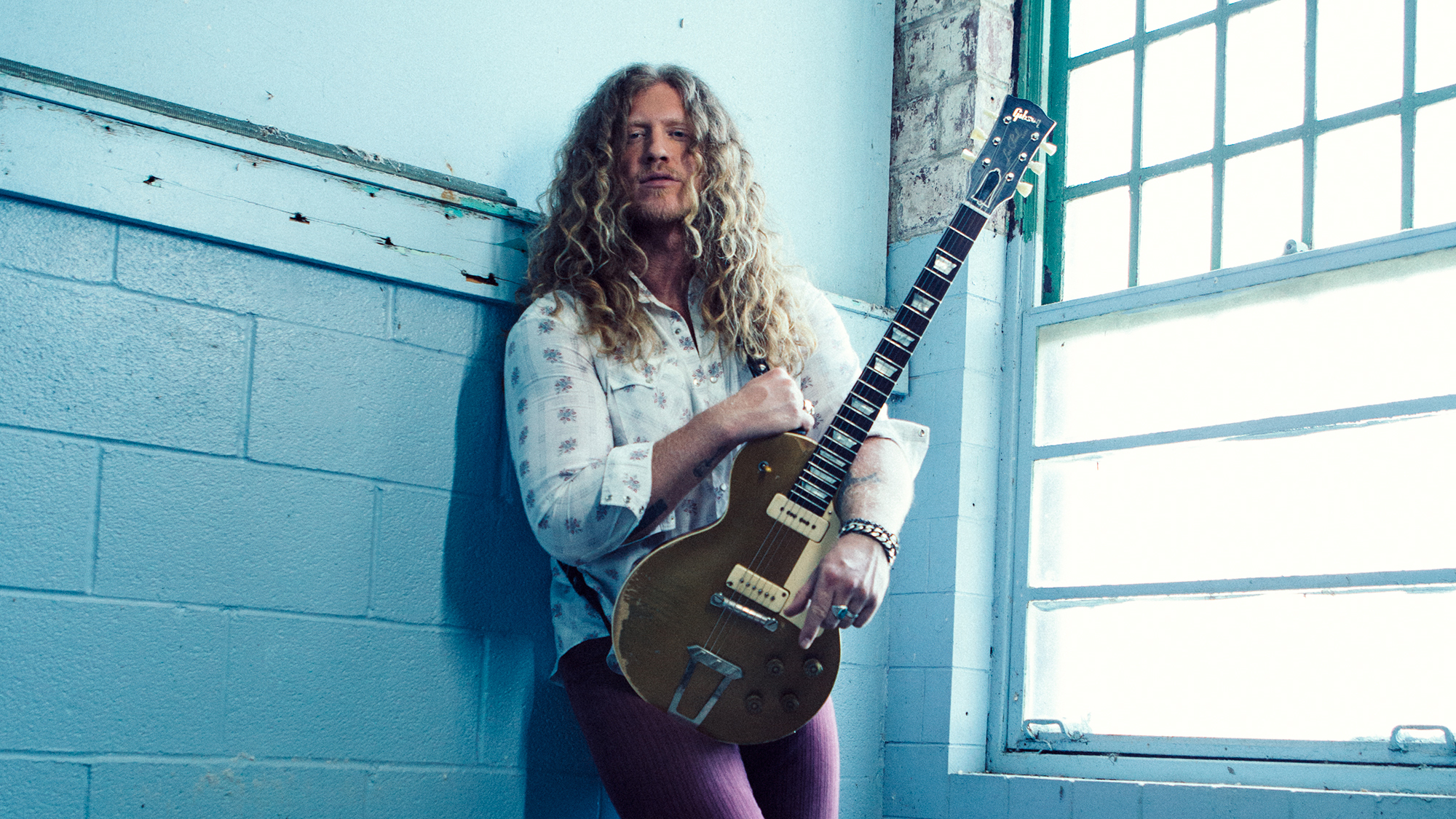
On the subject of your vintage guitars, a lot of the ones that have become quite well known - like Dorothy and Ole Red - obviously have the standard two-pickup configuration. So, when you’re using those, do you stick to just the bridge pickup, or what was the inspiration for just having the one on your signature guitars?
"The inspiration for just having one on the signatures started because, way back in the day when I started messing around, I was living in California and Gibson let me take over their shop. They have this shop in a corner at their offices in Beverly Hills. I was a broke ass kid, and they let me in there. I’m not kidding when I say there was every piece, every pickup, and they were like, ‘Just use whatever you want.’
"So, I started making these Frankenstein guitars and the biggest reason as to why I got rid of the neck pickup was because, when I played, the pickup always got in my way. I would break my fingernails and stuff. Using your fingers gives a lot more of a warm sound and I was always messing with the bridge pickup, getting the sound out of that and messing with the knobs. I started to say to myself: ‘I don’t even use the f*****g neck pickup. Let’s just get rid of it!’
"I pulled out the neck pickup and I had this “hole” guitar and it was cool. This guitar and single pickup guitars force you to get all the sounds using the two knobs and your hands. It’s a personal instrument. You can’t flip pickups or use a Bigsby or whatever. You get what you’re given and you’ve got to make all of the sounds.
"With the vintage guitars, I’d say that I’m 90% on the bridge. Then, for solo stuff, I’ll flip it to the neck. You’ll never hear me play lower on the neck, or on the bass strings, with the neck pickup – unless it’s a really quiet, dynamic part. Most of the time when I’m using the neck pickup, I’m trying to go Gary Moore and epic and make it really sing.
"Don’t get me wrong, I’m not a hater on neck pickups! The vintage stuff is too good and I don’t want to be the one to screw it up, so I’m leaving those guitars as they are. It’s just there’s something about single-pickup guitars that I still get excited about."
I’m so surprised, to be honest, that this hadn’t been a thing a lot earlier
It essentially has the look and feel of a Les Paul Custom, but the guts of a Junior…
"Yeah! What I like about that is – I’m not the smallest person in the world – so Juniors sometimes feel like toys. Not that a Les Paul is much bigger. But with this, you get the feel of a Standard or a Custom and then you get the playability of a Junior. It’s kind of cool because it has the carved top, thicker body and the binding on the neck. There’s just a lot of cool factors. I’m so surprised, to be honest, that this hadn’t been a thing a lot earlier."
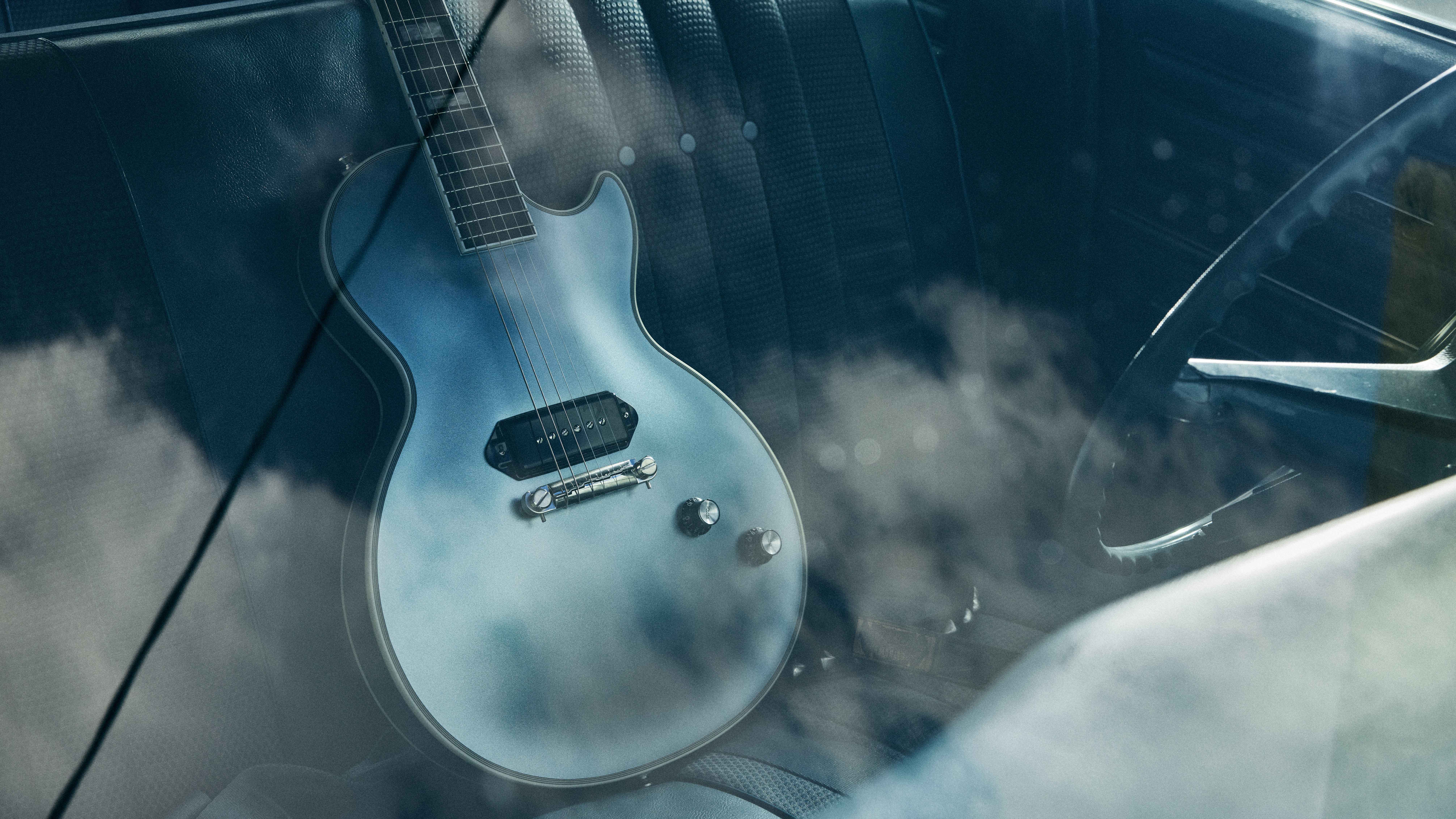
As you mentioned, you tend to be working the volume and tone controls quite a lot when you’re playing. Some players just crank them up and leave them in one spot. What are they missing out on by doing that?
"For me, it started with the P-90s. I used to be like that, but obviously when you have your volume all the way up with P-90s, no matter where you are, there’s going to be some sort of buzz. Some nights, or some places, are way worse than others – sometimes to the point where the buzz is almost as loud as your playing. It sucks!
"What I learned pretty quick was: if I was fast on my volume – if I’d played something and then rolled it off – I could hide the buzz. So that’s how it started.
I started to realise that if I rolled my volume down to six, it’s the best clean I’ve ever heard
"But then I started to realise – especially because I play fingerstyle and I’m on the bluesy side – that there’s so much dynamically. When you really use your volume and your tone knobs, you can get every sound out of it. I started to realise that and it’s really tough at first because you have to learn the exact spots. I used to use an amp with a clean channel and a gain channel, and then I started to realise that if I rolled my volume down to six, it’s the best clean I’ve ever heard. It’s still kind of dirty, but it’s got that thing. Then, I roll it up and that’s my solo sound.
"I recently saw an interview with Bonamassa and he was saying he uses his volume knob a hundred times in a show. If he uses it a hundred, I guarantee you, I'm using mine a thousand! Seriously, it’s every second. I’m constantly tweaking things just a little bit, almost to the point where maybe it’s not even doing anything, but I feel like it is!"
You always play with your fingers, whereas lots of electric guitar players – especially those who like to solo a lot – will probably feel most comfortable with a pick in their hand. Do you have any tips for transitioning to more of a tactile approach?
"The first thing you can do, just to dip your toes in the water, is use a pick and then do the hybrid picking. Essentially, breaking down my style, my thumb always goes down like a downstroke of a pick and my index, middle and ring fingers are always pulling up. So, if you start incorporating that, you’re getting the feeling of pulling up on the string.
"I think the biggest thing that someone has to think about when they start – if you’re really going to drop the pick and do fingerstyle – is the pressure. You need to understand that every string has a certain amount of pressure that needs to be applied to get certain sounds out of it. What string gauge you use is really important and so is how hard you’re striking the string.
When a lot of people start playing fingerstyle, they overcompensate
"Also, I don’t use my nails, I only use the side. You have to get used to the way your hand lies on the bridge. My hand looks like a paw over it, but it has to lie a certain way. When a lot of people start playing fingerstyle, they overcompensate. They’re almost snapping it.
"I’m holding my hand like an electric guitar player would holding a pick. My thumb is always an anchor and my fingers are back behind it. My palm is always muting, and if I’m not muting with this hand, I'm definitely muting with my fretting hand!
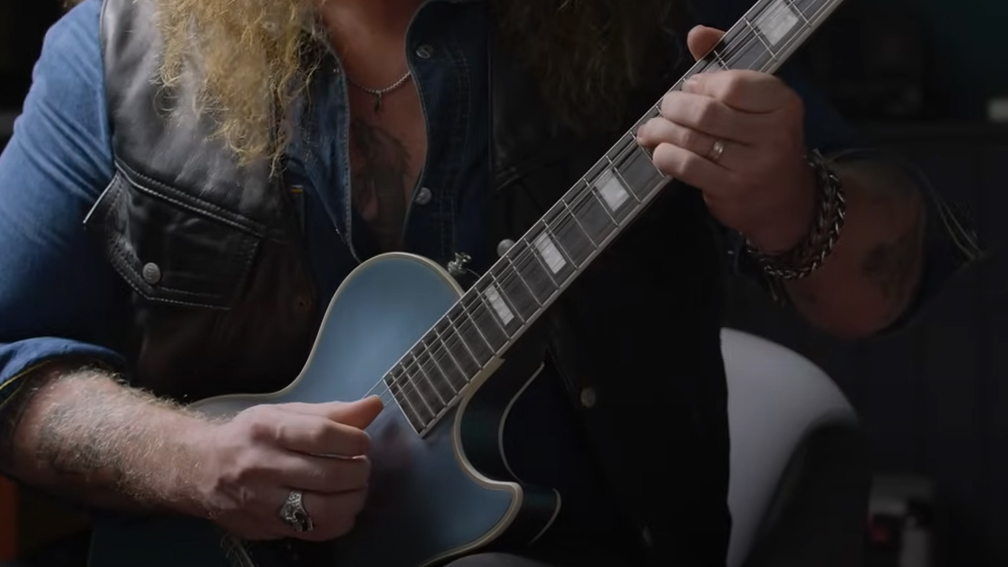
You also use feedback very creatively and very musically. Do you have any tips for keeping it under control and incorporating it into your sound?
"I’ve had friends who think my rig sounds great and I’m like, ‘Yeah, try it!’ They’ll literally put on Dorothy or Old Glory and it’s just f**king screaming! They look at me like, ‘What’s wrong?!’
"There’s something really crazy with P-90s. I use quite a bit of gain, and when I say gain, it’s more like overdrive. It’s not chunky, it’s more like stacking the gain to the point where all you have to do is touch it and it just starts to feedback. I love the feedback thing and I use it to my advantage because it jumps the octaves. I can go by my amp and I know exactly where it is.
"It’s kind of a cool musical thing. Someone put up a video of me the other day saying: ‘This is the best feedback I’ve ever heard.’ The first comment was like, ‘Have you ever heard of Hendrix?’ If anything, I bow to the altar of Hendrix’s feedback."
Aside from getting their hands on one of your signature guitars, what else would somebody need to do if they wanted to achieve a tone similar to yours?
I don’t use a lot of bass and I don’t use a lot of treble – I always crank the mids
"The biggest thing I would say from a setting standpoint on the amps is that I don’t use a lot of bass and I don’t use a lot of treble – I always crank the mids. Especially with old-school P-90 pickups, putting in a lot of mids gives the guitar a lot more clarity and it makes it stand out if – for example – I’m jamming with someone playing on a Strat, or even just a bass player and drummer.
"Another thing I’d say is to go for a simpler rig. My rig is really simple. On my last tour it was a Blackstar amp, two overdrives – one was always on, just to push the amp even harder – and a wah wah. Then a P-90 Les Paul. So, it’s a really simple set-up, but it’s all about making every note count. It’s like riding a horse that’s trying to kick you off!
"But yeah, go mid–heavy and don’t be afraid to really lay into it!"
I just feel like the least amount of stuff in between my guitar and amp, the better
What are the specific pedals that you do use?
"On the tour, it was a Klon with a Tube Screamer and then just a tuner and a Vox wah wah. I’m not a pedal guy. It’s not that I don’t like them. It’s nothing weird, it’s just the way that I play. I’ve never been good with a delay pedal ever. I’ve tried delays so many times and it sounds better on recordings when you put it on after I’ve played. I just feel like the least amount of stuff in between my guitar and amp, the better.
Returning to your Blues Power signature just to finish off where we started, what do you most hope that it will inspire in those who play it?
"I just want people to get the feeling I get when I pick it up. With guitar, there are no rules and it’s so much fun. If this guitar does anything, I hope that it inspires someone to play and create the music they want to create. I get it that it’s the ‘Jared James Nichols whatever’, but the reality is, it’s a cool ass guitar. If you want to play punk, surf, rockabilly or jazz, this guitar can do anything you ask it to – it’s all about who’s playing it.
Joe Walsh from The Eagles is playing a Gold Glory and Don Felder plays one
"I would like to make guitars that are signature models that don’t even have my name on them because I feel like, sometimes with a signature model, it’s too much and it can typecast it. The big thing for me now with signatures is I just want people to play them because they love the guitar. Joe Walsh from The Eagles is playing a Gold Glory and Don Felder plays one. I think that’s so cool because the only real recognisable thing is that little signature on the back and the truss rod plate.
"When you see them on stage with it, you’re just like, ‘Damn, that’s just a really cool looking Les Paul!’ Ego aside, I think that’s really cool."

Do you think a signature-less signature model will really be your next project?
"I think next, we’ve got to do a Gibson! I love to do Epiphone guitars because I love them and I’ll play them for the rest of my life. I don’t ever see myself growing out of that because there’s too much cool stuff to do. As long as they keep asking me to come up with ideas, I’ll be like, ‘Yeah!’
"But, obviously, I’ve gotten so many cool vintage pieces, that there’s so much more on that side too. I think it would be awesome to start to delve into that. So, we’ll see what happens!"
Are you hatching plans for a replica of your beloved Dorothy?
"I talked to Tom Murphy about that. He was like, ‘I’ve got to see that guitar!’ and I said, ‘Good luck replicating that because every time I take it on tour, it comes back looking older!'"
- The Epiphone Jared James Nichols Blues Power Les Paul Custom is available at epiphone.com
- For more info on the Seymour Duncan JJN Silencer P-90 visit seymourduncan.com
Ellie started dabbling with guitars around the age of seven, then started writing about them roughly two decades later. She has a particular fascination with alternate tunings, is forever hunting for the perfect slide for the smaller-handed guitarist, and derives a sadistic pleasure from bothering her drummer mates with a preference for “f**king wonky” time signatures.
As well as freelancing for MusicRadar, Total Guitar and GuitarWorld.com, she’s an events marketing pro and one of the Directors of a community-owned venue in Bath, UK.
